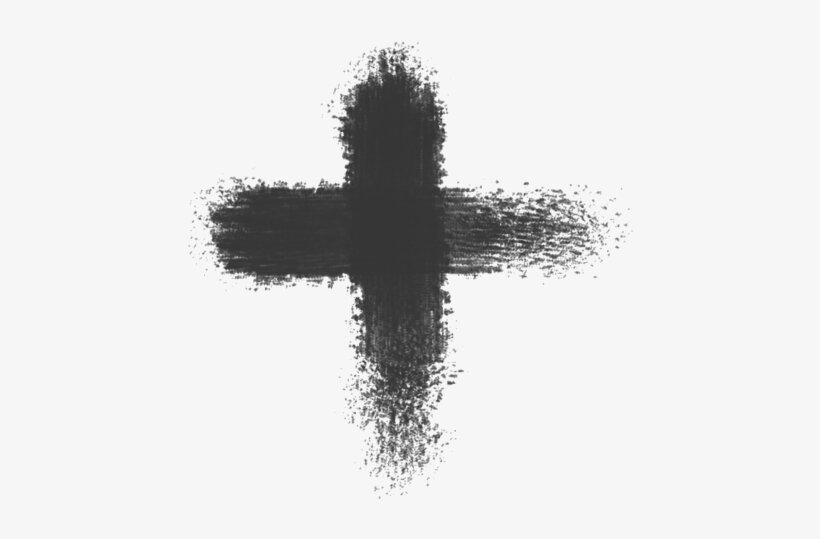Alms-Giving :: Something Greater Than Jonah
Mass was weirdly joyful, this past Sunday. Weirdly, because Lent had just started and many parishioners looked the way I felt: tired, frustrated, humbled, and/or ruing the resolution to give up [*insert vice*] or take up [*insert virtue*]. Still, there was a palpable joy in the sanctuary of our Church. We had gathered, as a family, sharing a creed and a language and a ritual as familiar as the walls that held our worship. Lent can be a period of self-inflicted hardship, but we find comfort in the mere fact of gathering there together and holding one another up.
Our little family of four drove home down Goodwood, a direct but scenic meander through leafy neighborhoods, past the library and schools, past the always-intriguing activity at the corner of Airline. Shortly after we passed the Main Library, my husband drew in a sharp breath and pulled over. “Jesus,” he said, and then, “Lord, have mercy.” The kids and I sat speechless, following his eyes across the median.
I finally found the capacity of words. “Was that …”
My husband nodded slowly. “St Luke’s,” he said. “It’s gone. The whole church.”
He sounded hypnotized. Across the street, a fire marshal’s SUV and a a single fire truck hummed on the site of the church we pass almost every day, going to LSU or back home. Only it wasn’t a church anymore. It had been reduced to a pile of brokenness.

Smoke still rose from the sharp ruins of an unrecognizable wooden structure. Firefighters successfully conquered the blaze around 3 a.m. … but the wreckage kept smouldering for hours.
St. Luke’s school, thankfully, was not touched by the fire; and the firefighters who got trapped when a blazing beam fell behind them found an exit and emerged safely. No lives were lost. Those are mercies.
But in the midst of such loss, some mercies are hard to see. I thought of the people driving up for Sunday morning services, to find their church in cinders, and my heart cracked like a windshield, little fissures everywhere. Their church, their sanctuary, reduced to ash.
I am writing this post during a mid-week Lenten Mass. (And, I’ll admit, I’m feeling self-conscious and extremely aware of my privilege, kneeling in my usual mid-week-Mass spot, listening to the lapping water of the baptismal font, watching the flicker of altar candles. Every shape and sound familiar: this is home, the home of my soul. It’s a lot more than just walls and a roof, and I can’t imagine losing it. I have to wrench my attention away from the realization of just how fragile every moment of stability and belonging can be.) The first reading, from the Book of the Prophet Jonah, recounts the repentance of the King of Nineveh, a city scheduled for divine destruction. The Lord sends Jonah to alert the people of Nineveh, known for its wickedness and idolatry, that their city will be destroyed. “Forty more days and Nineveh will be overthrown,” Jonah proclaims, and the Ninevites believe and humble themselves in penitence. The king, too, clothes himself in humility, praying to save his vast city and its citizens. Nineveh is so large it takes Jonah three days to cross it. Imagine how many lives hung on that king’s pleading prayers. Imagine the history. The weddings and funerals, the family feasts and solemn celebrations in a land dedicated more to Ishtar than to YHWH.


“When Jonah’s warning reached the king of Nineveh, he rose from his throne, took off his royal robes, covered himself with sackcloth and sat down in the ashes.” (Jonah 3: 6)
Obviously, the community of St. Luke’s committed no “wickedness” that brought about the fire that destroyed their church; and I doubt very much recovery teams will find a heat-gnarled statue of a Mesopotamian goddess in among the rubble. These days, even the most devastating of fires does not represent God’s wrath visited on its victims: we no longer live in the age of Ninevetic prophecy, but in the age of mercy and redemption.
Still, this is the season of Lent; and Lent begins with ashes.
Ash marks our earthly mortality, a dark thumb-stroke on our foreheads to impress our need for forgiveness, amd remind us that these weeks stand aside from our usual way of living. Lent opens with this sign of death, of something consumed – but it closes with fire, too, the fire that announces a new age. If our forehead-crosses remind us of the darkness of the grave, the “new fires” of the Easter Vigil remind us of the light of the world. “Lumen Christi” (the light of Christ), the Catholic priest chants into a somber, unlit church; “Deo gratias” (thanks be to God), the faithful respond, passing tiny flames from candle to candle until the sanctuary glows with the light from a community of candle-bearers. Pinpricks of hope across the expanse of darkness. We repeat this call-and-response dialogue three times in all, until the whole church fills with individual brightnesses so numerous you can’t tell the candles apart, and we are all encompassed together in the joy of the Resurrection. We have to “die” first (and let’s face it, forty days without alcohol or chocolate can sometimes feel like death, or even make dying seem preferable …), before we can come back into life with the new flame.
This same day, after the reading about Nineveh’s repentance, the Gospel shows Jesus speaking bluntly to a growing crowd. “This is an evil generation,” he says: “The men of Nineveh will stand up at the judgement of this generation and condemn it, for they repented at the preaching of Jonah; and now something greater than Jonah is here.” (Luke 11:32)
Is it strange that I only just now noticed the Gospel reading comes from St. Luke?


During the season of fasting and prayer, I pray the soul of St. Luke’s can find comfort knowing the ash is temporary, and merely temporal. And also that, even while mourning the destruction of St. Luke’s sanctuary building, and grieving this unimaginable loss, perhaps they can find peace in the reality beyond destruction: that sanctuary walls, and bricks, and joists, and windows, and altar beams, and organ pipes, are just a building, not the location of their faith. The Temple will be rebuilt, remember? The real place of faith lives within each member of the community, and in the ways communities worship and sing and mourn, and birth new voices to worship and sing and mourn, together. They are, we are, Church. For something greater than Jonah is here. We renew our promises. We renew each other.
The third pillar of Lent is alms-giving.
For those of us who belong to other faiths and traditions, other communities, the fire that took St. Luke’s is an invitation to live this third pillar more acutely. However we worship, wherever in the city we find “home” within our faith, we are stronger together. I don’t have a lot of disposable income, but I can give other things – time or talent, money, compassion, prayer and casseroles … I think all these things and more will be necessary.
Rebuilding the Episcopalian “temple” on Goodwood will take longer than three days.
But seventeen years in Hurricane Country have shown me a side of South Louisiana that Mardi Gras tourists don’t get to see. Down here, we are a community anchored not in dread, but in resilience. So we can do it the way we do down here, in this southern land of crawfish and carnaval, of hope and hospitality: by holding each other up, trudging and clawing and dancing our way out of the ashes.


*A note : If you “search up” (as our eldest son says) the cause of the St. Luke’s fire, you will indeed see one link whose headline reads “Baton Rouge Church Fire Ruled Arson” – but if you look any closer you’ll notice that the article, which is not about St. Luke’s, dates from August 2023.



















